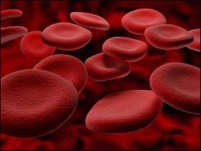Genetics
Introduction
 It is estimated that annually about 7.9 million births (6% of total) occur all over the world with a defect of genetic or partially genetic origin. With a high prevalence of genetic disorders such as hemoglobinopathies (thalassemias and Sickle cell), EMR countries share a large part of this burden accounting for as much as 26% of the annual total conceptions with β-thalassemia worldwide. Carrier rates, as high as 50% for α-thalassemia and 30% for sickle cell are observed in some EMR countries or within specific populations within these countries. Cultural practices such as consanguineous marriages are important contributors to this high prevalence.
It is estimated that annually about 7.9 million births (6% of total) occur all over the world with a defect of genetic or partially genetic origin. With a high prevalence of genetic disorders such as hemoglobinopathies (thalassemias and Sickle cell), EMR countries share a large part of this burden accounting for as much as 26% of the annual total conceptions with β-thalassemia worldwide. Carrier rates, as high as 50% for α-thalassemia and 30% for sickle cell are observed in some EMR countries or within specific populations within these countries. Cultural practices such as consanguineous marriages are important contributors to this high prevalence.
the World Health Assembly (WHA) has adopted two resolutions on hemoglobin disorders : resolution WHA59.20 on sickle-cell anemia, adopted by the Fifty-ninth World Health Assembly in May 2006; and resolution WHA63.17 on birth defects, including sickle-cell disease and thalassemia, adopted by the Sixty-third World Health Assembly in May 2010).
Click here for more info


